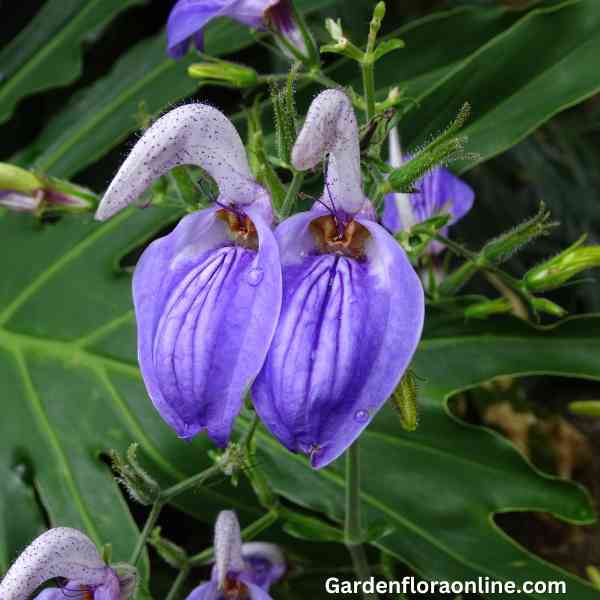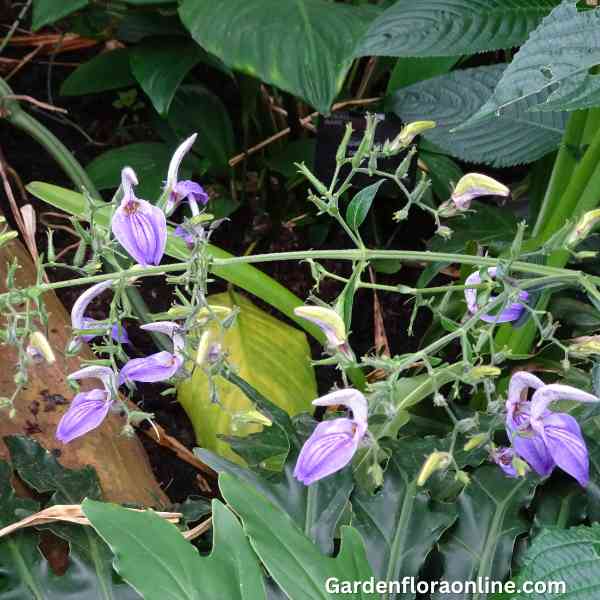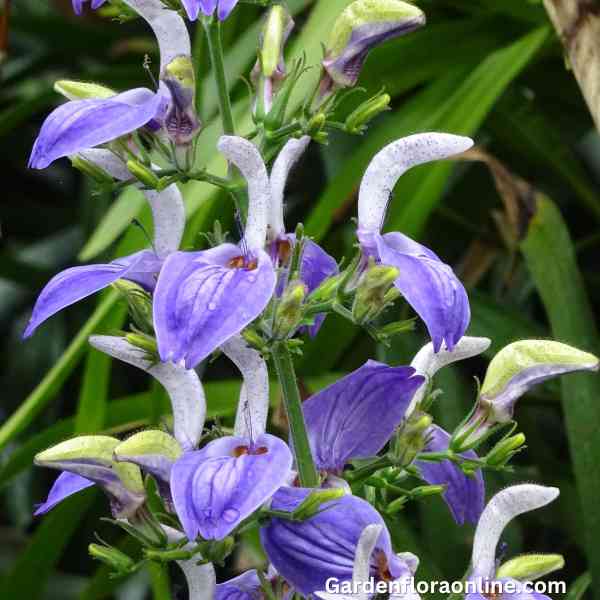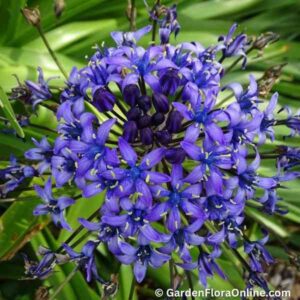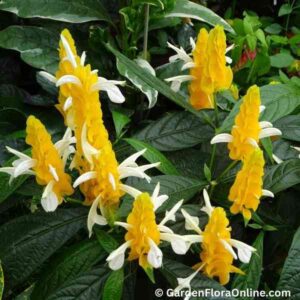Brillantaisia owariensis (African Giant Blue Salvia)
Perennial or shrubby herb, usually glandular and sticky; stems up to 2 m tall, erect or rooting at base, glabrous to crisped-puberulous, sometimes also with long pilose hairs. Leaves with petiole up to 14 (-17) cm long; lamina ovate-cordiform or broadly so, largest 11-28 x 6-20 cm, apex acuminate, sometimes drawn out into a short obtuse tip, base cuneate to cordate, margin regularly to irregularly and sometimes grossly crenate-dentate (rarely subentire), glabrous to densely crisped-puberulous on veins, glabrous to sparsely puberulous on lamina. Panicle from very lax to narrow and contracted, (5-) 10-45 cm long, finely puberulous and with usually dense broad glandular hairs, often also with long pilose hairs; primary bracts green to purplish, ovate to elliptic or obovate, from leaf-size to 10×3 mm near apex, finely puberulous and with long pilose hairs, towards apex with stalked capitate glands; secondary bracts lanceolate to elliptic, 5-18 x 2-5 mm; pedicels 0.5-7(-ll) mm long. Calyx dark purple, with dense capitate glands, ± puberulous hairs and ± scattered pilose hairs; lobes linear-lanceolate, tapering gradually to distinctly spathulate, ventral and lateral (8-) 12-19 mm long, dorsal (10-) 14-21 mm long. Corolla pale to deep mauve, pale to deep purple or blue to dark blue with white throat, (25-) 30-53 mm long, with purple to dark purple glandular hairs; tube 7-14 mm long; lower lip 20-38 mm long, lobes 2-5 mm long, ovate, subacute (lateral) or rounded. Filaments and style white; anthers black, (5-) 6-9 (-11) mm long, hairy along connective; staminodes filiform, 10-15 mm long, widened apically. Capsule (17-) 20-35 mm long, the valves 2-3 mm wide, glandular-puberulous and usually with longer non-glandular hairs. Seed ±1.5 mm long (after Vollesen, 2008).
Etymology: The genus name Brillantaisia is named in honor of M. Brillantais-Marion, the principal ship-owner of the Company of Oware. The specific epithet owariensis comes from the Latinized form of “Oware,” referring to the Company of Oware.

